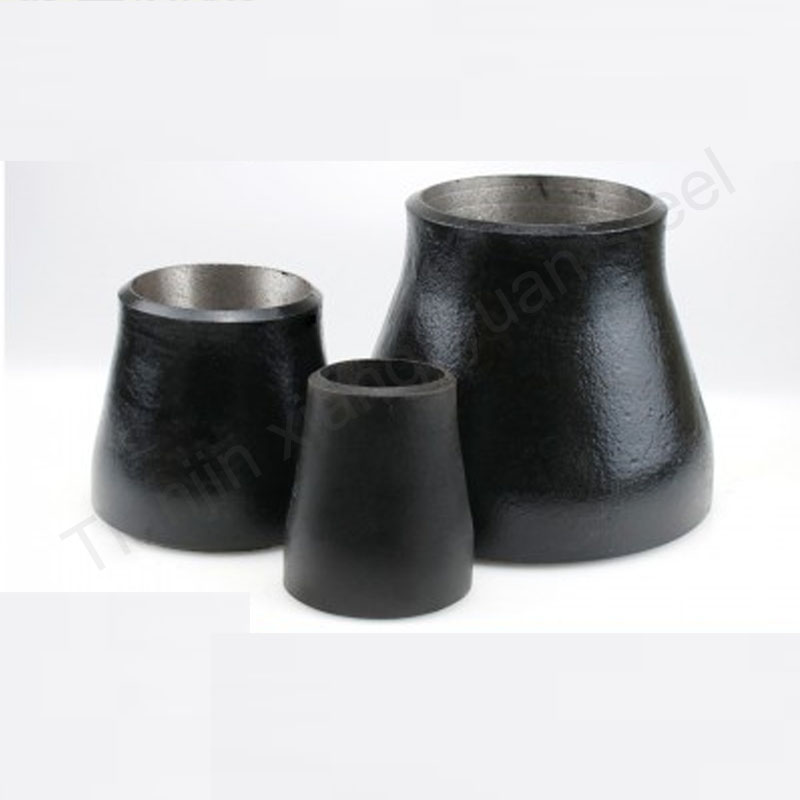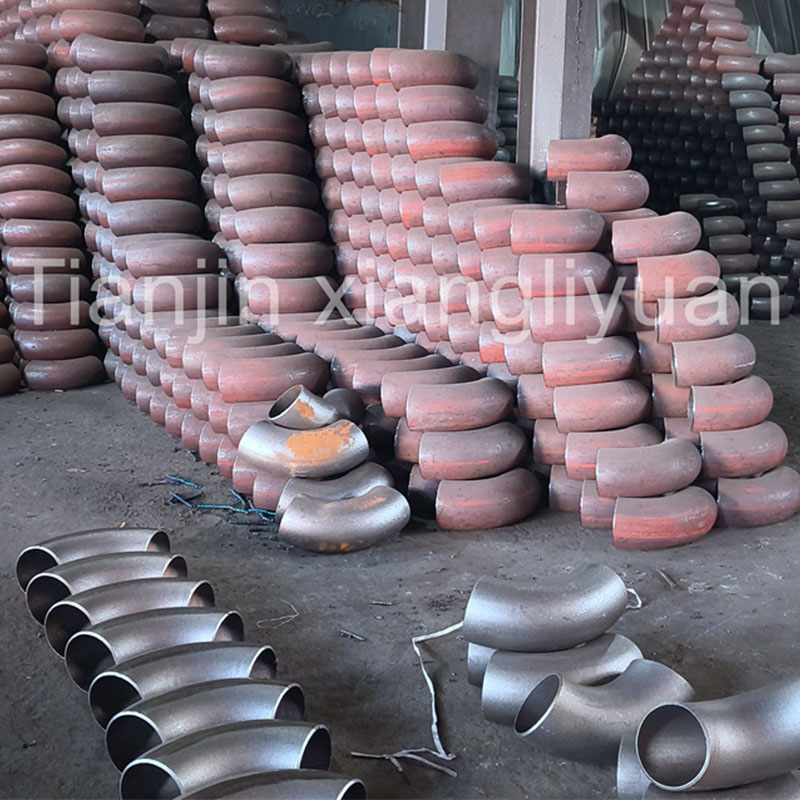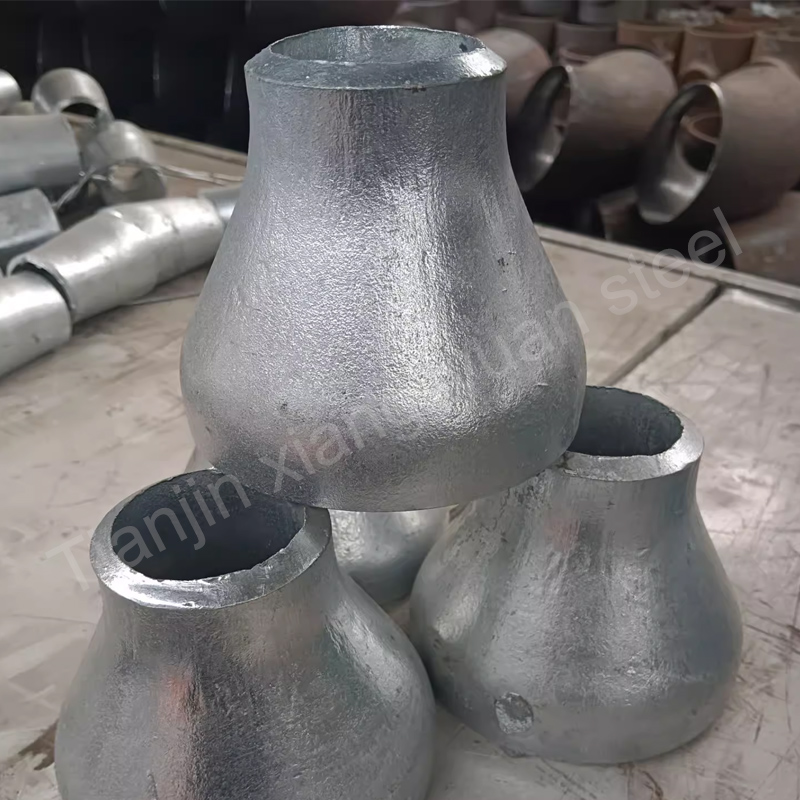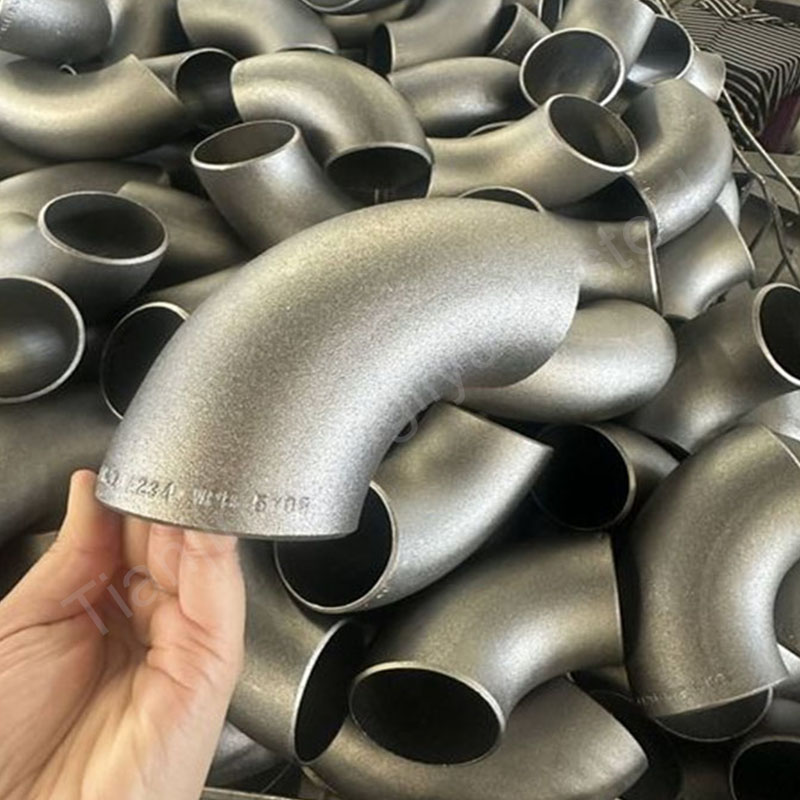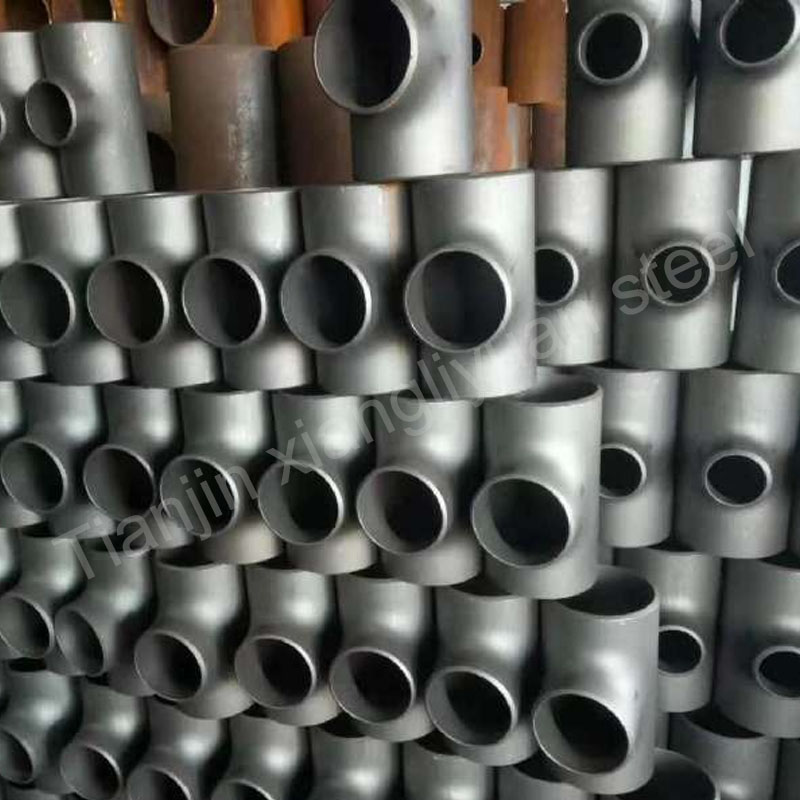Carbon steel reducer is a common pipe fitting used to connect pipes or equipment of different diameters.
The diameter reduction of pipe fittings can be classified according to the way and purpose of diameter change, mainly including the following types:
Concentric Reducer: The center lines of the two ends of the concentric reducer are on the same straight line, and the diameter gradually decreases from the large end to the small end. This type of reducer makes the flow of fluid inside the pipe smoother and reduces the resistance of the fluid.
Eccentric Reducer: The center lines of the two ends of the eccentric reducer are not on the same straight line, and the center line of one end deviates from the center line of the other end. It is usually used in pipeline systems that need to discharge liquids or gases to ensure that the fluid is discharged smoothly without accumulating in the pipeline.
Short Radius Reducer: The radius of the short welded reducer is small, which is suitable for connecting pipes or equipment in limited space. Compared with the long radius reducer, the short radius reducer is more suitable for pipeline systems with smaller bends.
Long Radius Reducer: Long Radius Reducer has a longer radius and is usually used in pipeline systems that require a larger bending radius to reduce fluid resistance and pressure loss.
Multiple Outlet Reducer: Multiple Outlet Reducer has multiple outlets and can be connected to multiple pipelines or equipment, suitable for complex pipeline networks and branch systems.
The material of reducer fittings is usually selected according to specific engineering requirements and use environment, mainly including the following common materials:
Carbon Steel: One of the most common pipe fitting materials, suitable for general industrial applications, such as ASTM A234 WPB, A420 WPL6 grades, can be used under normal and low temperature conditions.
Stainless Steel: With excellent corrosion resistance and high strength, it is suitable for industries with special requirements such as food, pharmaceuticals, and chemicals, such as ASTM A403 WP304/304L, WP316/316L grades.
Alloy Steel: It has high heat resistance and corrosion resistance, suitable for high temperature and high pressure environments, such as ASTM A234 WP91, WP22 grades.
Aluminum Alloy: It is lightweight and has good thermal conductivity and corrosion resistance, suitable for applications that require light weight and thermal conductivity.
Copper Alloy: It has excellent thermal and electrical conductivity, suitable for special industrial and aerospace fields.
The manufacture and use of reducer pipe fittings follow some major international standards and industry specifications, including:
ASME B16.9 – This is a standard developed by the American Society of Mechanical Engineers (ASME) that covers the manufacturing requirements of industrial metal pipe fittings, including concentric and eccentric reducers.
ASME B16.11 – This standard specifies the requirements for forged steel pipe fittings, especially for piping systems in high pressure and high temperature environments.
ASTM A234 – This is a standard specification for pipe fitting materials, covering carbon steel and alloy steel pipe fitting materials and their chemical composition, mechanical properties and other related requirements.
ANSI B16.25 – This is a standard for welding ends, including the requirements for welding end treatment of pipes and fittings to ensure the quality and reliability of welded connections.
EN 10253 – European standard, covering the manufacturing requirements of pressure fittings, suitable for piping systems in industrial and construction applications, etc.
Reducing fittings have many important uses in pipeline engineering, mainly including the following aspects:
Pipeline connection and adaptation: Reducing fittings are used to connect pipes or equipment of different diameters, so that the pipeline system can smoothly transition and adapt, ensuring the continuous flow of fluid or gas in the pipeline.
Fluid control and regulation: In the pipeline system, the control and regulation of fluid can be achieved by using reducing fittings, such as reducing or increasing the flow rate and pressure of the fluid to meet the needs of the process and system.
Pressure and flow management: Reducing fittings can help manage the pressure and flow in the pipeline system, control the velocity and pressure loss of the fluid by adjusting the cross-sectional area of the pipeline, and optimize the performance of the pipeline system.
Pipeline discharge and transition: When transitioning from a large diameter pipeline to a small diameter pipeline or equipment is required, the use of eccentric reducers can ensure smooth discharge or transition of fluid or gas, reducing stagnation and accumulation of fluid in the pipeline.
Space limitations and design requirements: In a limited space, the use of short-weld or long-weld reducers can effectively connect pipelines or equipment to meet the space limitations and layout requirements of engineering design.

